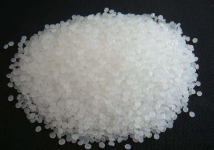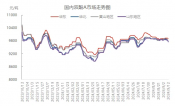read: 1147 time:2025-07-03 12:58:09 from:化易天下
When comparing the reactivity of pyridine and benzene towards electrophilic substitution, it's clear that pyridine is significantly less reactive. This difference in reactivity can be attributed to the electronic structure and aromaticity of pyridine. Understanding why pyridine is less reactive than benzene towards electrophilic substitution requires a deep dive into the molecular structures, resonance effects, and the impact of nitrogen on the pyridine ring.
The core difference between pyridine and benzene lies in their molecular structures. Benzene is a six-membered aromatic ring composed entirely of carbon atoms, each contributing one electron to the delocalized π-electron system. This system is highly electron-rich, making benzene particularly attractive to electrophiles, which seek out electron-dense regions to react with.
In contrast, pyridine, though also a six-membered aromatic ring, contains a nitrogen atom replacing one of the carbon atoms. Nitrogen is more electronegative than carbon, which means it pulls electron density towards itself. As a result, the π-electron cloud in pyridine is less dense than in benzene. This reduced electron density makes pyridine less reactive towards electrophilic substitution, as electrophiles find it less attractive.
Another critical factor that explains why pyridine is less reactive than benzene towards electrophilic substitution is the resonance effects in pyridine. In benzene, the resonance structures contribute equally, creating a stable and highly delocalized electron cloud over the ring. This resonance stabilization is one reason why benzene undergoes electrophilic substitution rather than addition.
However, in pyridine, the nitrogen atom has a lone pair of electrons, which can participate in resonance. But, unlike the carbon atoms in benzene, nitrogen tends to hold onto its electrons more tightly, and its lone pair is not part of the aromatic π-system. Instead, the lone pair remains in a sp² orbital, orthogonal to the π-system, reducing the resonance contribution of the nitrogen to the overall stability of the ring. Consequently, this weaker resonance in pyridine makes the ring less reactive toward electrophilic substitution reactions.
The nitrogen atom in pyridine not only withdraws electron density from the ring due to its electronegativity but also exhibits an inductive electron-withdrawing effect. This effect further reduces the electron density on the ring, especially at the ortho and para positions relative to the nitrogen atom. Electrophilic substitution typically occurs at these positions, but in pyridine, the electron deficiency caused by nitrogen's inductive effect makes these sites even less reactive.
Moreover, any electrophilic attack on the pyridine ring would destabilize the aromatic system by further reducing the electron density in a system already compromised by nitrogen's presence. This further elucidates why pyridine is less reactive than benzene towards electrophilic substitution.
In summary, the reduced reactivity of pyridine compared to benzene in electrophilic substitution reactions can be attributed to several key factors. The electronegativity of nitrogen decreases the electron density of the aromatic ring, making it less attractive to electrophiles. Additionally, the nitrogen atom's participation in resonance is limited, further reducing the stability and reactivity of the pyridine ring. Finally, the electron-withdrawing inductive effect of nitrogen makes the ortho and para positions less reactive, making electrophilic substitution less favorable. Therefore, understanding these molecular nuances clarifies why pyridine is less reactive than benzene towards electrophilic substitution.

Jincheng Petrochemical's 300000 ton polypropylene plant successfully trial production, 2024 polypropylene market analysis

The ABS market remains sluggish, what is the future direction?

Market differentiation of bisphenol A intensifies: prices rise in East China, while prices generally decline in other regions

The production method and process flow of silicone acrylic lotion, and what are the common raw materials